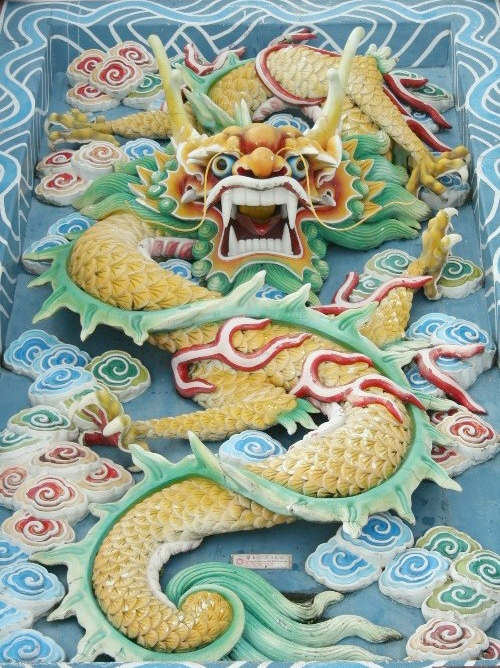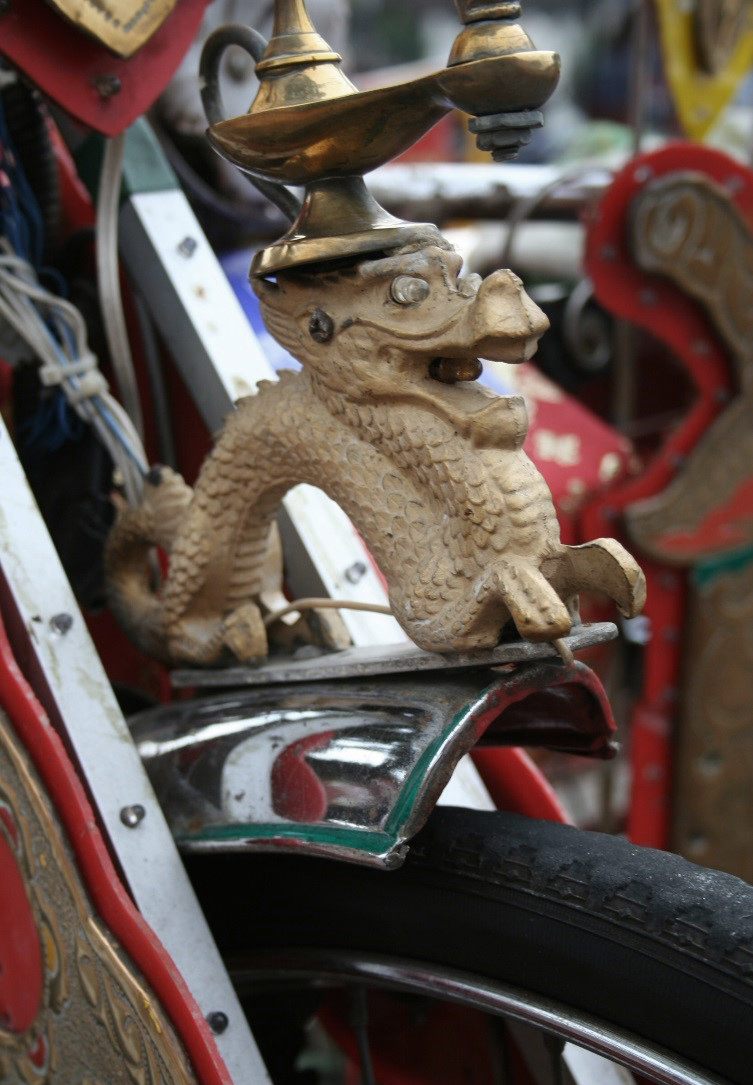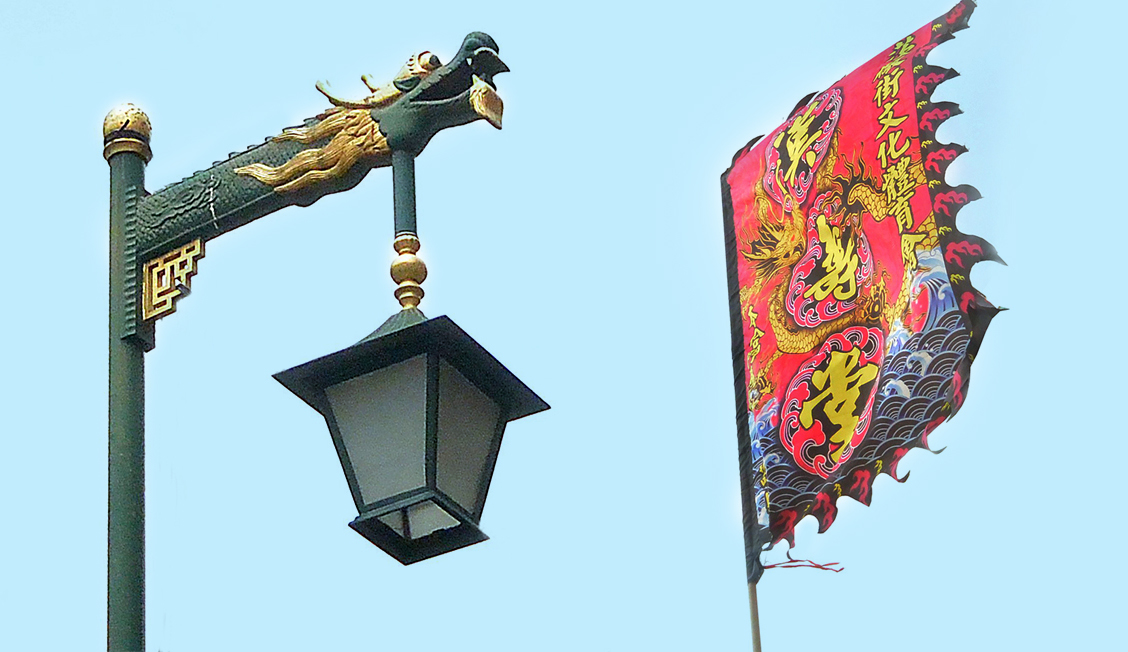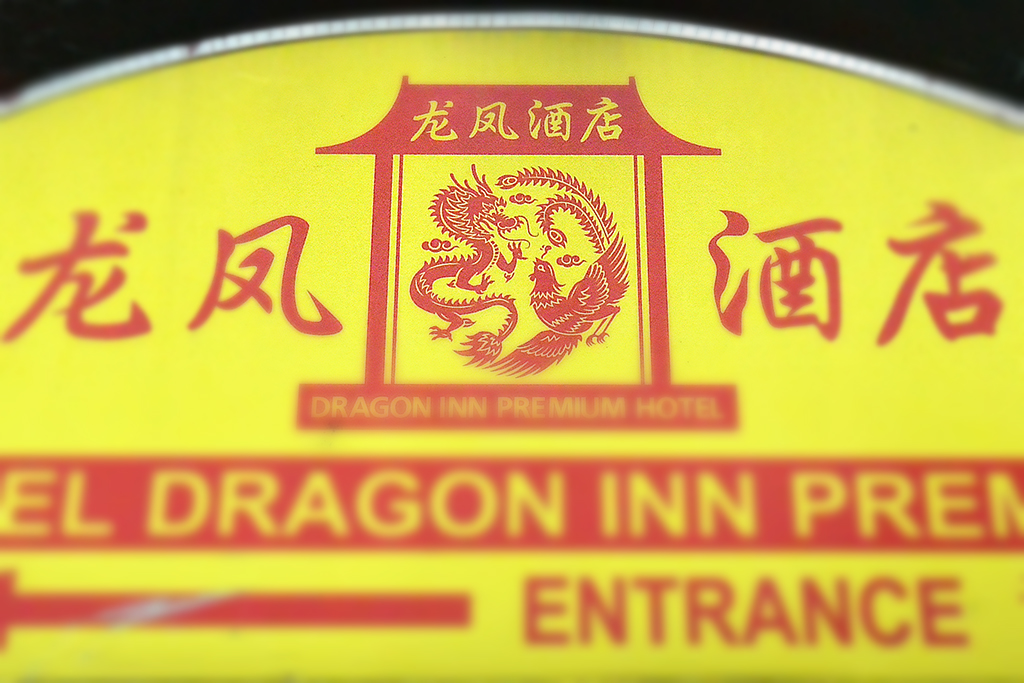As this article is an abstraction of the author’s Master of Art thesis, she dedicates it to her thesis supervisor Professor Dato’ Dr. Ghulam-Sarwar Yousof.
Introduction
To most people, the Chinese dragon is not an unfamiliar creature. With multi-coloured scales on its body, it is often depicted flying in the sky or swirling its body chasing after a pearl. In traditional Chinese belief, the Chinese dragon is a guardian and protector. One can be most sure to find images of the Chinese dragon in temples and clan houses wherever there is a Chinese community.
However, as time passed, the Chinese dragon symbol is found to be more apparent in places such as shopping malls, print materials such as posters and postcards, and body art, among other places besides traditional ones.
Malaysia, as part of Southeast Asia, still has strong influences of the Chinese culture, although much assimilation with other cultures has taken place. Therefore it would be interesting to look into the evolution of the Chinese dragon symbol in contemporary Malaysia.
The Origin of the Chinese Dragon and Its Relation to Chinese Culture
The Chinese dragon is a mythical creature comprising of various parts from different animals – a camel’s head, a deer’s horns, a rabbit’s eyes, a cow’s ears, a snake’s neck, a frog’s belly, a carp’s scales a hawk’s claws and a tiger’s palms (Dennys, 1876). Although there is no specific reason to the selection of these particular parts, it can be said that each one has its own strength and thus chosen to form an almighty creature that is fearless and unconquerable.


Not only is the Chinese dragon a mythical creature, it is also a symbol of the Chinese. According to Mr Ng (Ng, B., personal communication, May 2007) of the Maritime Museum in Malacca, the Chinese dragon exists in real life but can only be seen by those who have good spiritual cultivation such as monks.
“To become real to the imagination (of the unknown), the divine must be concrete. We define our world in terms of objects that have dimension and form, outline and substance, texture and colour, smell and sound and taste…As ancient man grappled with self-identity in terms of the human relationship to the cosmos, as he sought to understand experiences believed to manifest divine powers that were beyond human comprehension, as he tried to give meaning to patterns within the topocosm, he concretised his mythological statements, and the artistic expressions became statements in and of themselves.” (Larue, 1975, p. 18)
The basin of the Yellow River, where the Chinese civilisation started (Lee, 1986), was most probably the birthplace of the Chinese dragon. According to Williams (1974), the dragon was a manifestation of the early Chinese’s image of the crocodile or alligator, which still live at river banks today in the River Yangtze.
The relation of the Chinese dragon to strength, goodness, change and the growing of crops is probably influenced by the fact that crocodiles or alligators hibernate throughout the autumnal equinox and only emerge when spring starts. This can be equated to the awakening of nature’s energies (Williams, 1974).
The dragon is a protector of and benefactor to those who are hardworking, kindhearted, giving, generous and filial. These are ethical values that are looked upon in any civilisation. Chinese folktales tell of how dragons help scholars achieve good grades to be promoted to higher ranks in the government so the parents of these scholars could live a better life. It is evident then that the Chinese dragon plays a role not only in being a mythical being that creates balance of rain and shine on earth but also shapes the Chinese way of thinking and living.

The Chinese Dragon as a Form of Contemporary Art in Malaysia
In recent times, the image of the Chinese dragon can still be found in Malaysia. Does it still play its role in a mythological way of protecting the place and its people; or seen merely as part of a decoration to indicate ‘Chineseness’? According to Berger (1973), a work of art is unique as of the place where it once resided. When the work of art is reproduced, the uniqueness of the image is destroyed, its meaning changed (Berger, 1973).
Originally largely found in religious artefacts and buildings, the Chinese dragon was seen as protector, beneficent to humankind and provider of good weather. Contemporarily, the appearance of it in such diverse settings and viewed by so many who come from different backgrounds, has created new meanings.
The Chinese Dragon in Tattoos
The history of tattoos can be traced back to at least 12 000 years ago, in the Neolithic period (Deter-Wolf, 2013). Tattooing purposes differ from culture to culture although the common factor has always been ceremonial. In East Malaysia, for example, a traditional tattoo on the arms of tribal women symbolises their specific skills such as household chores like sewing and this increases these women’s value in marriage. It is also believed that a person with a certain pattern of tattoo summons the spirit related to that pattern, signifying the power of that animal possesses the being of the person (Shanghai Star, 2005). Today, tattoo is widely practiced as a form of self-expression.
Nevertheless, the image of the Chinese dragon today carries more than just religious and traditional value. Due to its appearance, it evokes a feeling of ruggedness, bravery and authenticity. To Mr Yim (Yim, W. H., personal communication, July 2007), a Malaysian tattoo artist, wearing an Oriental style dragon tattoo may serve as a reminder of a certain path of one’s life, or it may represent the love for someone who was born in the Year of the Dragon.
The Chinese Dragon as Street Decoration
Some places in Malaysia, particularly areas or places with strong Chinese influence, one will find Chinese dragons decorating lamp posts, banners and street arches. Not so much as a symbol of protection as found in temples and clan houses, the Chinese dragon in street decoration is merely a symbol of the Chinese culture.
With the use of modern materials such as glass and steel, the shape and form of the Chinese dragon has been modified to suit contemporary times. On lamp posts in Petaling Street, Kuala Lumpur, the form of the Chinese dragon is fused into the design of the lamp post. The dragon’s head serves the purpose as a beam holding the lamp. In this regard, the form has a function. Although the purpose precedes aesthetics, the designer of this lamp post had put in a considerable amount of aesthetic values and symbolism into the design.

Chinese dragon. Right: Even in these modern times, the traditional dragon design is still commonly in Malaysia. Photograph by Damien Egan.
And so, without much reference to being a protective symbol, the Chinese dragon is used to decorate today’s commercial world. In the course of change, the Chinese dragon image can be seen from a new perspective – aesthetics. Its shape, form and colours although not fully representational as a symbol of protection now, are appreciated as a form of art and remains a cultural symbol of the Chinese.


Conclusion
Today, although the Chinese dragon is seen more as an art form rather than a protection symbol, it still retains its cultural significance as a symbol of the Chinese people. Within this notion of visual perspective, attributes such as culture, society, commerce and aesthetic values have been, without a doubt, factors that define the form, function and significance of the contemporary Chinese dragon in Malaysia. According to Arnheim (1969), it is through the perception of the past that we can have the understanding of the present and similarly what is seen in the present will affect what we see in the future.
References
Arnheim, R. (1969). Visual Thinking. California: University of California Press.
Berger, J. (1973). Ways of Seeing. London: Penguin Books.
Dennys, N. B. (1876). The Folklore of China. Amsterdam: Oriental Press.
Deter-Wolf, Aaron (2013). “The Material Culture and Middle Stone Age Origins of Ancient Tattooing”. Tattoos and Body Modifications in Antiquity: Proceedings of the sessions at the EAA annual meetings in The Hague and Oslo, 2010/11. Zurich Studies in Archaeology. 9. Chronos Verlag. pp. 15–26.
Larue, G. A. (1975). Ancient Myth and Modern Man. New Jersey: Prentice-Hall.
Lee, S. M. (1986) Spectrum of Chinese Culture: All About Chinese Heritage, Marriage, Parentage…and Other Fascinating Knowledge. Malaysia: Pelanduk Publications.
“Skin-deep meanings.” Shanghai Star. 17 March 2005, 5 November 2007.
Willams, C.A.S. (1974). Chinese Symbolism and Art Motifs: A Comprehensive Handbook on Symbolism in Chinese Art Through the Ages. (4th Rev. ed.) Singapore: Tuttle.

